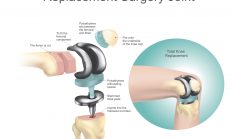What are Computed tomography (CT scan) or computerized axial tomography (CAT Scans)?:
CT or CAT scans are special computer-processed x-ray tests that take cross-sectional images of your body, using x-rays and a computer.
How CT scans work:
Technicians use special X-ray equipment to take images of your body from a series of angles. Computers are then used to compile these into cross-sectional (tomographic) images of your vessels, bones, and soft tissues. These cross-sectional images, called slices, show far more detail than an ordinary X-ray.
When are CT scans used:
CT scans can be used in many ways, including:
- Finding the location of a clot, infection, or tumor
- Seeing if a patient has internal bleeding or other internal injuries
- Assessing the effectiveness of certain cancer therapies
- Diagnosing disorders of muscles and bones
- Finding and monitoring heart disease, cancer, masses on the liver or nodules on the lungs
- As a guide when performing surgery or a biopsy, or administering radiation therapy to a patient
- Radiation exposure: CT scans expose you to radiation, which can lead to a slightly elevated risk of developing cancer. The newest CT machines use lower doses of radiation than before; speak with your doctor about your options. If you’re pregnant, be sure to tell your physician; he or she may opt for another diagnostic test.
Possible complications from contrast mediums used in CT scans:
For certain CT scans, you may be given a liquid called a contrast medium beforehand, since it can help highlight the areas of your body that the scan is examining. Its side effects can vary by the delivery method:
- By mouth: You may experience an unpleasant taste.
- By enema: If the contrast is inserted into your rectum, you may feel bloating.
- By injection: Your mouth may feel metallic and you may experience a sudden feeling of warmth.













